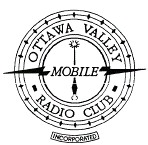From the launching of the concept of Slow-scan television in the late 1950s, through the use of this technology to transmit some of the classic pictures from the early days of space exploration and on to amateur radio applications beginning in the late 1960s and up to current SSTV transmission from the International Space Station (ISS), slow-scan television has had a lasting appeal.

For current images from the ISS check out the ARISS SSTV images page where Terry VE3DIJ / VE3BQ posted several issues he captured, two of which appear below.

See: https://www.spaceflightsoftware.com/ARISS_SSTV/bycallsign.php
Perhaps at the centre of the appeal of SSTV is the simple wonder of being able to share still images over thousands of kilometres. This is done by software that provides a line-by-line slow scans of images received and sent by converting colour and brightness variations into audio tones without error correction via an ordinary SSB transceiver.
As noted by Ramon Glidden in a September 1997 QST article this mode can be added to the whole host of other auditory communication that hams enjoy to have “visual” QSOs through an exchange of pictures. As Ramon notes “Who says hams should be heard and not seen?” Also hams being “seen” has a fairly low threshold for amateurs to participate in given ready access to both computers and free software.
As a fairly non-technical amateur radio operator (aka appliance operator) there is security in numbers when configuring radios, sound card interfaces and computer software. Thus my journey into digital modes has been mediated by a small group of American and Canadian amateur radio operators who participate in a weekly “weird-and-wacky-digital-modes-play-group” zoom meeting where digital modes such as FreeDV, JS8Call and now SSTV are explored. Thanks to Bob VE3YX for suggesting I think about joining the group when he heard me on the air doing some POTA hunting and inadvertently interfering with one of the frequencies the group was exploring!
Part of the security in numbers comes when we all agree to use one particular software and have some guidance from anyone who may have more experience with the software or be able to share their struggles to date. Part of the fun is that we all muddle along together and work in real-time to transmit and receive over HF bands and share the results from both sender and receiver at the same time.
As the “play group” coordinator Don (KM4UDX) put it in his endearing invitation to come play with SSTV and the MMSSTV program -
“Got FT8 working? Worked every T8 country/grid/zipcode in the world?
Why not try SSTV? If you thought it was one of the worst communication modes possible, you were right. hahah. The hottest thing (50 years ago), SSTV has no error correction, is sort of slow, full of kitsch, of limited use, and has only one freq 14.230. Which makes it perfect to play with!”
This captures nicely the spirit of the group and sets appropriate expectations for experiencing SSTV!
A screen shot of the main page of the MMSSTV program appears on the next page, with only a partial image appearing in the receive window with the rig tuned to 14.230MHz, one of the most popular frequencies for SSTV. The QSOs are accomplished by receiving or sending a CQ using customizable templates as overlays for pictures you can import into the “S.Pix” menu which appears to the right of the “S.Templates” menu.



While AH5HR’s picture on the previous page was the best picture quality I received my fumbling to make an SSTV QSO working various images and likely sending a variety of images may have influenced his choice of images to acknowledge our QSO! Typically as appearing on the previous page a QSO can also be acknowledged by embedding the CQ image in a 73 reply image.
Anyway i hope this has provided a bit of the flavour of some SSTV related activities and may warrant having SSTV running in the background of the shack sometime.
73, Alan VA3IAH
Appears in: Rambler Vol.66 Issue 3
REFERENCES:
Fast start guide: https://www.hamuniverse.com/sstv.html
A Guide to MMSSTV: https://mcbainsite.co.uk/a-guide-to-mmsstv/
You Tube Ham Radio - SSTV overview: https://www.youtube.com/watch?v=I7Vy63sfdjk
http://www.arrl.org/files/file/Technology/tis/info/pdf/19320.pdf
http://ariss-sstv.blogspot.com/
https://www.essexham.co.uk/sstv-the-basics
https://hamsoft.ca/pages/mmsstv.php
Primer: https://hamsoft.ca/pages/mmsstv/sstv-primer.php
Getting started (1990): http://www.arrl.org/files/file/Technology/tis/info/pdf/99753.pdf
